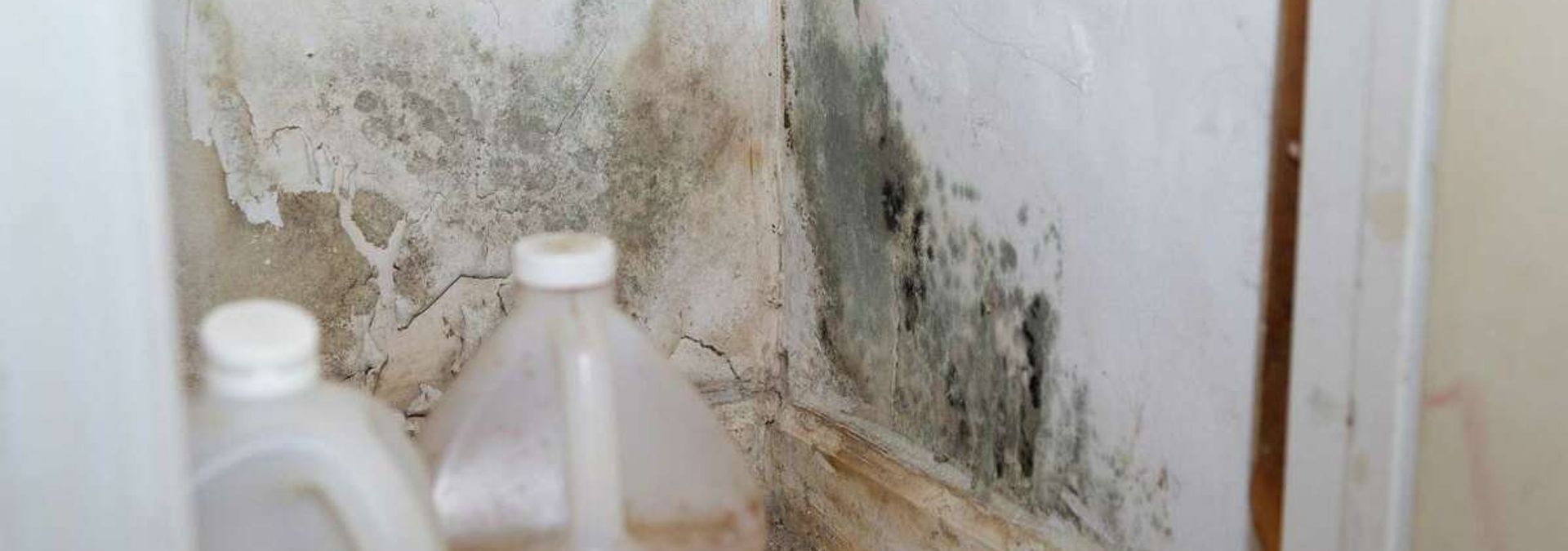
Hurricane Harvey’s still here for Houston’s historically Black communities
Five years later, mold lingers in the pantry of Gloria Smith's home in Acres Homes, which was flooded by Hurricane Harvey. Photo: Yi-Chin Lee.
There are still only studs where there should be freshly painted walls hung with family photos. There’s still mold you can see, and there’s mold you worry you can’t. Single window units struggle against the summer heat. Space heaters struggle against the winter cold. Wood is still rotten, wiring still exposed.
I’ve seen these conditions in so many of the homes that flooded when Hurricane Harvey hit Houston five years ago. For many of us in historically Black communities, though, Harvey’s still happening. I’ve heard a few stories with happier endings, but I know that many people here are still waiting for phone calls to be returned and applications for aid to be picked up off the floor and processed.
Gloria Smith, 61, lives in Acres Homes not far from Mayor Sylvester Turner, and remembers being woken up by her son telling her, “Momma, the house is flooding.” She’s lived there for 40 years, but the frequent flooding didn’t start happening until 2005. The drainage ditches are clogged with illegal dumping. “Every time we have a big old rain,” she says, “the water doesn’t have anywhere to go.”
Smith had been denied aid before, so she documented Harvey’s flooding with video. FEMA provided some money for repairs, but it wasn’t enough. She says her application to a home repair program was denied and that, even though she kept calling, she was told she didn’t qualify. Later, she found mold in her pantry and is afraid it’s in the walls, too. Her son, now 41, got COVID and is on oxygen. He shouldn’t be dealing with mold.
After Harvey, Congress approved $4.3 billion for Texas, but the money has not followed the need. At first, Houston and Harris County were not going to receive anything. The U.S. Department of Housing had to intervene and warned the Texas General Land Office that they had discriminated against coastal communities of color, dispersing the funds to inland counties far less populous and far less vulnerable to hurricanes. One town received $4.1 million for a wastewater project that would benefit about 400 people. One county received nearly $50 million to build an underground fiber optic network. There’s no doubt that they need it. The thing is, we do, too.
I was born in Fifth Ward and still live here. Many of us have always been here, our relationships strengthening, deepening, over the years. None of us is a stranger. So, it hurts that much more to see each other suffer and struggle. I’ve been around long enough to see far too much of it. I’ve been around long enough to see why.
The five years after Harvey come after nearly 100 years of systemic racism that has shaped what our community has and what it doesn’t. In the 1930s, Fifth Ward was redlined as “hazardous” for banks to invest in on federal maps created by the Home Owners’ Loan Corporation, and that lie has come true, in some ways. Property values were suppressed, which made it easier for polluting industries to operate. Freeways were built, which harmed our health and divided us. Environmental laws weren’t enforced, which is why our soil has dioxin and vinyl chloride and creosote contamination. Our drinking water comes into our houses through pipes tainted with toxic lead. Our streets don’t have sidewalks, and they don’t lead to parks or grocery stores, but to payday lenders and metal recyclers.
Recently, a group I founded, the Coalition of Community Organizations, worked with Environmental Defense Fund and Texas A&M to develop a Climate Vulnerability Index tool. It looks at 180 different things in a community, everything from how well the streets are maintained to how many homes don’t have bank accounts or indoor plumbing or internet access. It shows that Fifth Ward ranks in the top 99th percentile of 73,000 census tracts in the country. Vulnerability like this doesn’t just happen. It’s created. The Inflation Reduction Act that President Joe Biden signed into law this month promises investment of the kind that never came our way, but if it’s only in the form of tax credits and rebates, the concern is that we’ll be left behind all over again. It’ll be more of the things we’ve never been able to access. A rebate to buy an electric vehicle doesn’t do much good when you can’t afford the utility bill to charge it.
When I think of the anniversary of Hurricane Harvey, I think of the lack of equity we’ve seen. It’s a disaster layered on top of so many others. Without my faith, I don’t know that I would’ve been able to keep going. We need to ask why the disaster recovery funds are tied up in a dispute among federal, state and city agencies, but we also need to ask people like Gloria Smith what they need. We need to ask them what their priorities are and what the solutions could be, and we need to give them the resources needed to develop them. Those of us still waiting for the help promised after the disaster can tell you how to be resilient. We can tell you what it’s going to take to recover. Are we ready to listen?
This essay and photograph originally appeared in the Houston Chronicle.
Caldwell is founder of the Coalition of Community Organizations.
STAY UP TO DATE
The quality of our newsletter is considered satisfactory and poses little or no risk.
SUBSCRIBE

